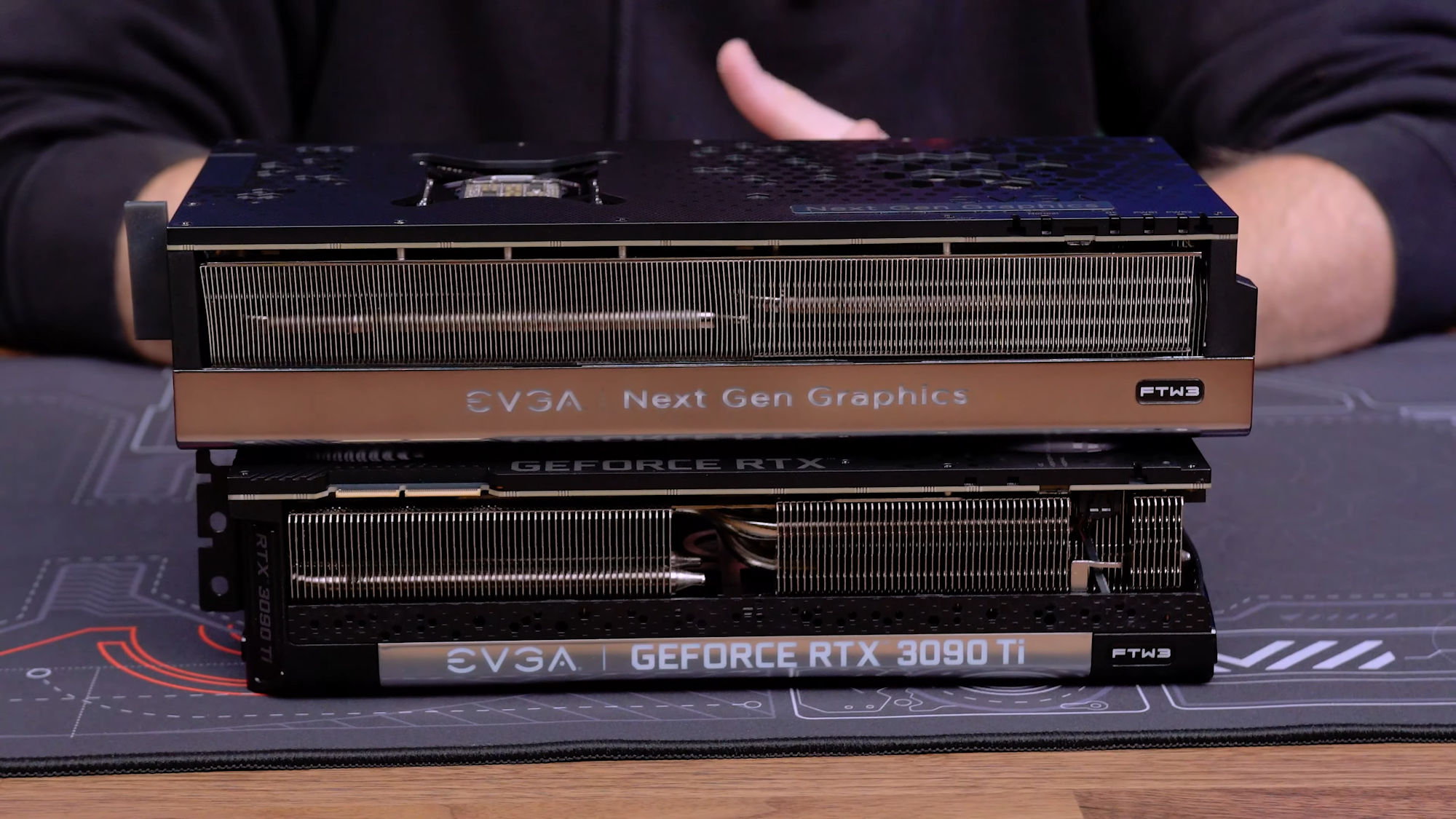When Jay and Gamers Nexus spoke with EVGA, Jay claimed he was shown a prototype RTX 4090 that looked just like the one he now has. This was presented to them both to highlight how severe and sudden EVGA’s decision to exit the GPU market was. The actual card is a very early prototype variant; the GeForce RTX 4090 badging has been changed with “Next Gen Graphics” to avoid licensing problems that could arise, given that EVGA is no longer associated with Nvidia. The cards were clearly engineering samples, as evidenced by the clearly visible machining marks and other manufacturing inaccuracies that Gamers Nexus displayed. This card’s GPU chipset was an NVIDIA qualification sample which is for testing purposes in early development stages. This FTW3 prototype has a notably more significant form factor and noticeably larger fans than the RTX 3090 and 3090 Ti FTW3 versions. The pure black finish of the previous generation is changed considerably by the silver accents on the top and bottom of the shroud. Instead of a purely aggressive game motif, as we’re accustomed to seeing on other cards, the card is often a little more muted. Jay thought it was incredibly amazing to see the card’s structural integrity, with the rear I/O backplate being directly attached to the GPU shroud to avoid GPU drooping. Jay illustrated this by placing the GPU in a case; despite the card’s approximate four PCIe slot widths, there was no sagging. The 16-pin power connection, which is located in the card’s back and forces the power cord there, rather than at the front, is the last design feature to be discussed. Compared to the previous 4090 versions, this design decision will make the card seem cleaner when inserted. To accommodate the more extended connection, users would need more space at the front of their chassis. The wires would allegedly bend less because of the connector’s location, which would have addressed the problem of the cables burning. Surprisingly, Jay demonstrated how to run Unigine Heaven on a machine using the card. Jay claims that the card is reportedly using a “home made” vBIOS since it is a very early prototype card. Since of this, the card’s ability to overclock its GPU core is limited because GPU overclocking software does not have a higher-than-100 percent power limit. Even though it is unfortunate that EVGA will no longer be producing GPUs, at least this card provides us with one more opportunity to see what EVGA was working on up to the very end of the company’s existence.
